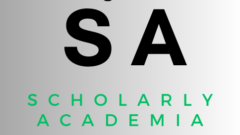COURSE:
NR504: Leadership and Nursing Practice Role Development
Part II: Written Paper
- In a three- to four- page paper, address the elements below. Use a minimum of four peer-reviewed scholarly sources, current within 5 years, to support your work. See the rubric for specific, required content criteria within each section of the paper.
- Provide an introduction to the paper.
- Discuss the characteristics of a culture of excellence.
- Present the mission, vision, and values of a selected organization, and explain the interrelationships between each element in the concept map. Describe how the mission, vision, and values do or do not support a culture of excellence.
- Discuss application of two specific leadership strategies that promote a culture of excellence, and how they support the Chamberlain Care Model®.
- Provide a conclusion to the paper.
Preparing the Assignment
Criteria for Format and Special Instructions
- Abide by the Chamberlain College of Nursing Academic Integrity Policy.
- Part II: Using Microsoft Word 2013, create the written paper for this assignment. Include a title page with your name, date, and course information, as well as a reference page.
- The paper (excluding title and reference pages) should be three to four pages in length.
- A minimum of four peer-reviewed scholarly sources, current within 5 years, are required.
- Sources older than 5 years may not be used without the permission of the class professor.
- Only one short quote (15 words or less) may be used within the body of your writing.
- Title page, pagination, subheadings, body of paper, citation of sources, and reference page must follow APA guidelines as found in the current edition of the manual.
- Rules of grammar, spelling, word usage, punctuation, and sentence and paragraph structure are followed and consistent with formal, scholarly writing as noted in the APA Manual (current edition).
- First person may only be used in the self-reflection portion of the assignment (see Conclusion section for criteria).
Directions and Assignment Criteria
Grading Criteria
| Part II
Introduction |
18 | 8% | Introduction includes the following.
Provide support from current, peer reviewed scholarly sources. |
| Part II
Culture of Excellence |
36 | 16% | This section includes the following.
Provide support from current, peer-reviewed scholarly sources. |
| Part II
Overview of Concept Map: Mission, Vision, and Values |
45 | 20% | This section includes the following.
Provide support from current, peer-reviewed scholarly sources. |
| Part II
Leading a Culture of Excellence |
36 | 16% | This section includes the following.
Provide support from current, peer-reviewed scholarly sources. |
| Part II
Conclusion |
27 | 12% | Conclusion includes the following.
|
| Graduate-level Writing Style | 27 | 12% | Graduate-level writing style is included, evidenced by integrating the following standards.
|
| Quality of Literature Support | It is an expectation that a minimum of four current, peer-reviewed scholarly sources are integrated within the assignment.
If the above expectation is not met, 9 points shall be deducted. |
||
| Paper Length | It is an expectation that the paper is a minimum of three full pages in length, and no more than four full pages in length.
If the above expectation is not met, 9 points shall be deducted. |
||
| Total | 225 | 100% | A quality assignment will meet or exceed all the above requirements. |
Solution
Leading a Culture of Excellence
Introduction
Pursuing a culture of excellence (CE) is exceptionally important in the healthcare industry since it facilitates continuous improvement. Establishing a culture of excellence in the medical environment empowers staff to deliver high-quality care, which is both reliable and safe (Fitzgerald, 2019). Continuous improvement is crucial for healthcare providers that face numerous challenges, including ongoing cost containment, difficulties of innovation, as well as issues concerning the communication of organizational objectives (Fitzgerald, 2019). Therefore, deployment of improvement strategies engages medical staff and develops an efficient methodology for coordinating refinement activities. A culture of excellence addresses the most common obstacles healthcare providers face on a day-to-day basis by focusing on the practices for the enhancement of the quality of care, which results in better patient outcomes.…………………please follow the link below to purchase the solution at $10
